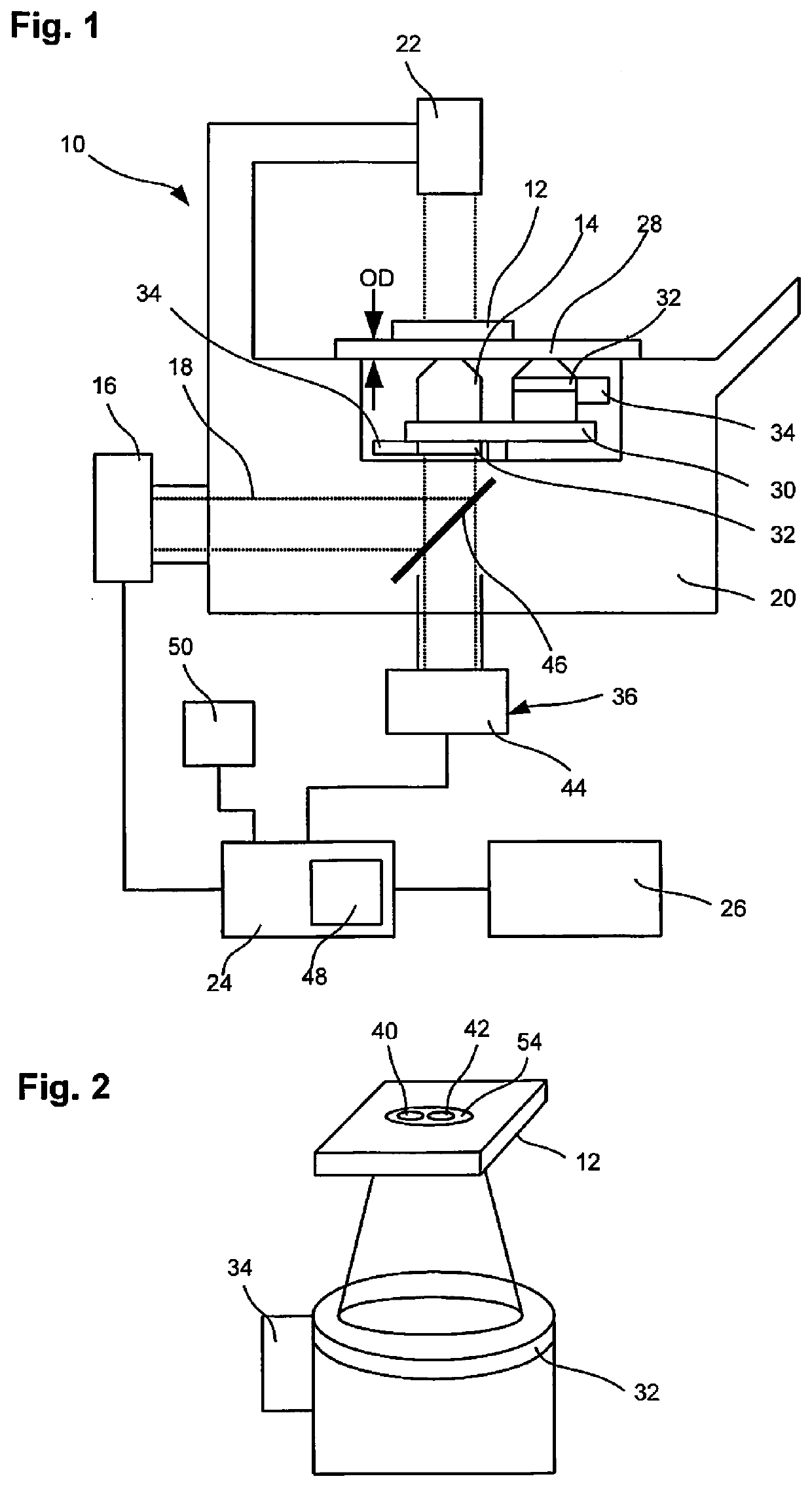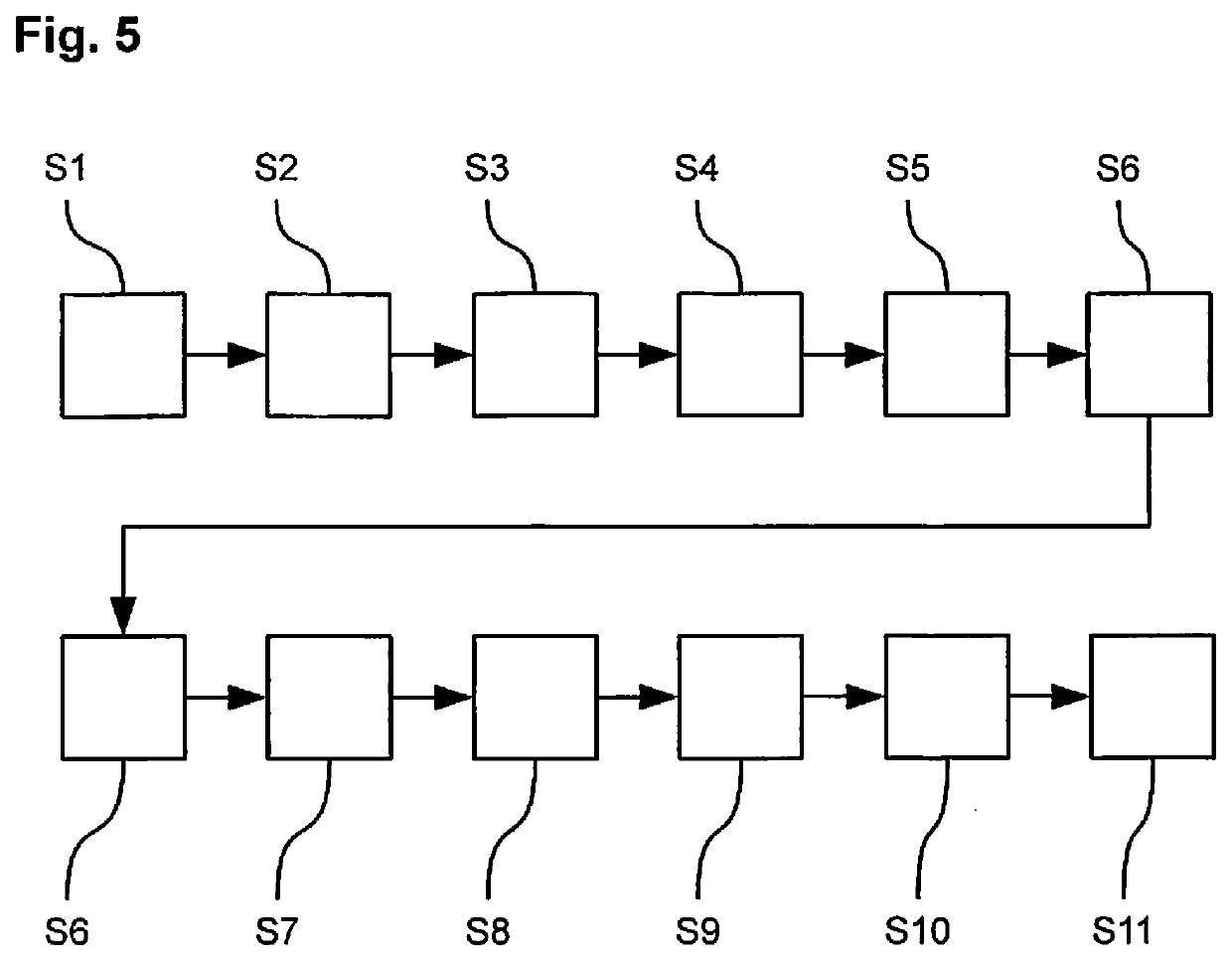Microscope and method for microscopic imaging of an object
a microscopic imaging and object technology, applied in the field of microscopic imaging of objects, can solve the problems of virtually preventing the change of setting during the experiment, cumbersome and precise setting of the correction optical unit, and loss of quality due to spherical aberration, and achieves the effect of little radiation damag
- Summary
- Abstract
- Description
- Claims
- Application Information
AI Technical Summary
Benefits of technology
Problems solved by technology
Method used
Image
Examples
Embodiment Construction
[0048]A microscope 10 facilitates imaging of an object 12. The radiation reflected or transmitted by the object 12 is collected by an objective 14 and imaged on an imaging detector 16 by means of an imaging beam path 18. The objective 14, the imaging detector 16 and / or the imaging beam path 18 are arranged within the housing 20 of the microscope 10. The imaging beam path 18 may be embodied for various types of imaging of the object 12. By way of example, the object 12 can be recorded in the wide field or by means of a scanning imaging method. Further, the microscope 10 may be embodied for fluorescence measurements. Depending on the type of employed imaging, the imaging beam path 18 comprises various optical elements and / or further components, such as, e.g., a scanning device for deflecting radiation. These components are not illustrated in FIG. 1. The object 12 can be illuminated, for example with a reflected-light light source or with the transmitted-light light source 22 illustrat...
PUM
 Login to View More
Login to View More Abstract
Description
Claims
Application Information
 Login to View More
Login to View More - Generate Ideas
- Intellectual Property
- Life Sciences
- Materials
- Tech Scout
- Unparalleled Data Quality
- Higher Quality Content
- 60% Fewer Hallucinations
Browse by: Latest US Patents, China's latest patents, Technical Efficacy Thesaurus, Application Domain, Technology Topic, Popular Technical Reports.
© 2025 PatSnap. All rights reserved.Legal|Privacy policy|Modern Slavery Act Transparency Statement|Sitemap|About US| Contact US: help@patsnap.com



